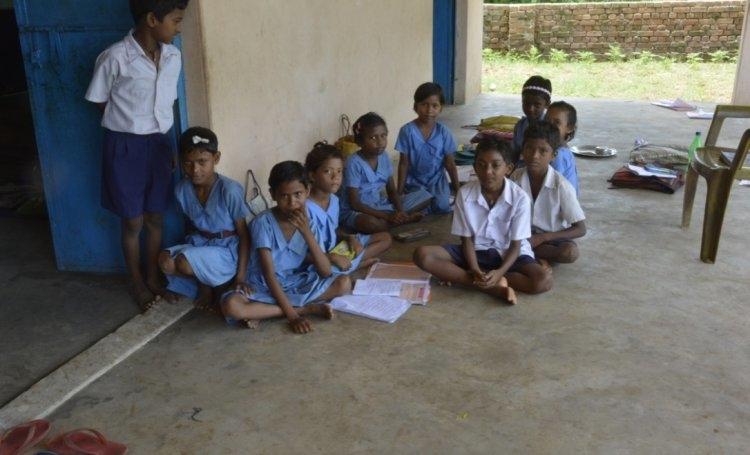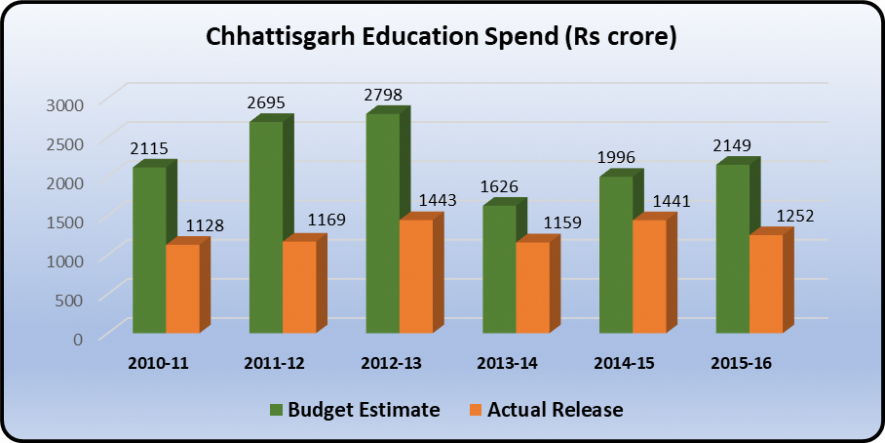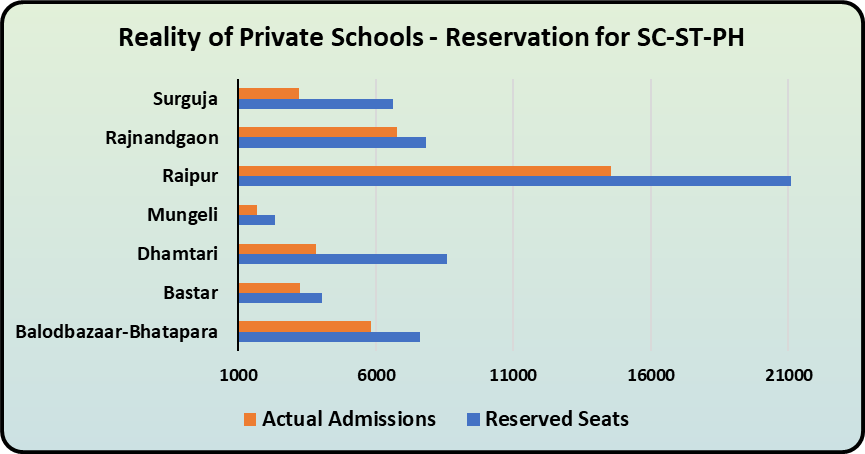Chhattisgarh: Primary Education Chaos Under BJP Rule

Chhattisgarh has been continuously ruled by the Bharatiya Janata Party (BJP) for nearly 15 years, since 2003. That’s a long enough time to bring about transformative changes in all spheres of life. Yet, sadly, even such an important issue as education has seen a marked deterioration in Chhattisgarh over the years. This is especially disturbing for a state that has a large share of Dalits and adivasis which make up 13% and 21% of the state’s population, respectively. A CAG Report released last year unveiled the sorry state of affairs of the state’s education department.
The first indication that all is not well in the state’s elementary education system came from the state government’s own survey of some 43,529 schools that made up 82% of all schools. The survey assessed the schools on 100 parameters and graded them from A to D on a descending scale. It was discovered that just 25% of the schools were in grade A, the balance three fourths being below par – needing improvement. A National Assessment survey also found that the state was 17th in rank among all states and 22nd in terms of Educational Development Index.
Enrolment of children in primary schools decreased by nearly 12% during 2010 and 2016, the period for which CAG did the performance audit. In government schools, enrolment decreased by 24% while it increased by 49% in private schools. This clearly indicated that there was a serious lacuna in the government’s education policy, forcing families to send their children to private schools. In upper primary schools (class 6 to 8), however, enrolment had increased by 13% in this period, in both government and private schools. What this means is that in recent years there has been a downslide.
This fact is startlingly confirmed by one key parameter – government expenditure on elementary education. Between 2010-11 and 2015-16, a total of Rs.13,379 crore was allocated for school education (Rajiv Gandhi Shiksha Mission) in the budgets. However, only Rs 7,592 crore, that is 57% of the allocation, was actually released for use. This expenditure was made up of 65% from central government and 35% from state government till 2014-15 after which it became 60:40. Both the central as well as the state governments failed to release their full amounts causing the inevitable degradation of the state’s educational system.

This funds crunch has become visible in myriad ways as the whole system started floundering. The most readily evident casualty was physical infrastructure. CAG teams test-checked 210 schools and this is what they found: no separate toilets for girls in 22% schools, no library in 20%, no playground in 37%, no kitchen shed in 18%, no room for headmaster in 23% and no boundary wall in 43% schools. In fact, in some cases, like boundary walls, the CAG noted that wasteful expenditure running into crores of rupees was on record.
There was complete chaos in the most crucial link in the education system, the teachers. The RTE Act recommends that at primary stages, the maximum pupil-teacher ratio (PTR) should be 30 while it should be 35 at upper primary levels. However, in Chhattisgarh, 14% of primary schools had PTR in excess of this standard while 45% schools had surplus teachers. For upper primary sections, 16% schools had adverse PTR but 61% had surplus teachers.
This shows that on the one hand, thousands of students would be suffering from shortage of students in their schools, while in other schools, teachers would be sitting idle. This anarchy is a direct result of the absence of due attention by the government which is causing a decline in enrolment and also bungling in postings.
The CAG found that there was an even more serious issue among the teachers. In 2012, the state had determined that there were 61,147 untrained teachers in elementary schools. It launched an elaborate programme for training of these teachers. Four years later, there were still 11,963 untrained teachers teaching in these schools. It is small wonder that the quality of education has suffered so much in Chhattisgarh.
Myth of Private Schools
The CAG report also blows up the mythology of private schools being better than government schools. It found that in the seven districts that they test- checked, of the 2,594 teachers in 145 private schools, 1,525 or 59% were untrained! This is much higher than the share of untrained teachers in government schools. The report also found that there were private schools openly showing profits in their books although that is prohibited in the RTE Act. Government schemes for reimbursing private school fees were also found to be deficient and tardy.
That this crumbling education system of Chhattisgarh would have an impact on the most social oppressed sections like Dalits and adivasis also became evident from the CAG report. In the seven test-checked districts, CAG teams found that reservation of seats for Dalits and adivasis – which is a onstitutional requirement – was not being followed in private schools. At least 25% seats were to be reserved for these sections but deficits from this minimum ranged from 13% to a whopping 56%. Note that the state exchequer was paying these schools Rs.7,650 (primary) and Rs.12,050 (upper primary) per annum per student for admitting these students.

Clearly, the Raman Singh-led BJP government in Chhattisgarh has been grossly negligent in building a sound, all-inclusive elementary education system in the state despite being given a mandate thrice. It appears to have succumbed to the neo-liberal dogma of scaling down government expenditure in order to encourage private sector spending, with disastrous consequences for the state’s people and their children. Children of deprived sections have borne the brunt of these policies.
Get the latest reports & analysis with people's perspective on Protests, movements & deep analytical videos, discussions of the current affairs in your Telegram app. Subscribe to NewsClick's Telegram channel & get Real-Time updates on stories, as they get published on our website.






















